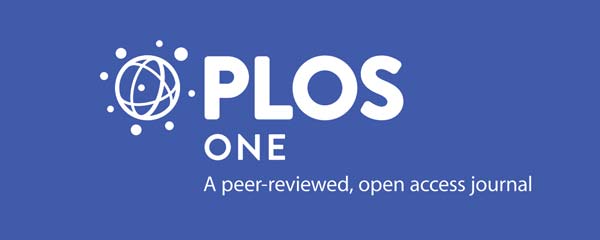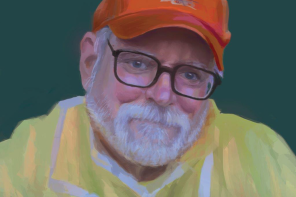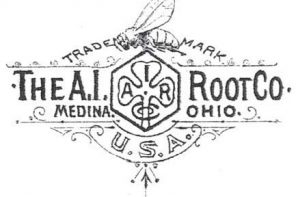By: Ellie Andrews
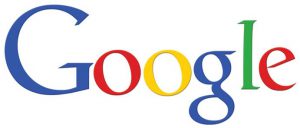
Honey bees are the best teacher. Or so they say. Unfortunately, mine don’t speak English, and I can be a little dimwitted, so I have to figure out most things some other way. I’m not the only one, though: at the Greater New York Bee Conference in March, speaker Phil Craft mentioned Google Scholar as a useful source of high-quality information, and I saw lots of people in the audience taking notes. That’s when I began to think more about how we as beekeepers find, evaluate, and use information. I’m finishing up my PhD at Cornell University, where I think a lot about similar questions: how to make the most of library resources, judge the credibility of particular references, read scientific literature, and share information responsibly. This is the core of “information literacy,” which is as much a part of my beekeeping toolkit as my smoker or hive tool.
A librarian once told me that the smartest way to start researching a topic is by talking to someone knowledgeable. Like many of us, I rely on the people in my club: Peter Borst, who’s forgotten more about beekeeping than I’ll ever learn; David Hopkins, who volunteers at Cornell’s Dyce Lab for Honey Bee Studies and always has something thoughtful to say; Shelley Stuart, who models how to squeeze bees into a full life; and other generous officers and members, too many to name here. But, as the saying goes, ten beekeepers might have eleven opinions — and, more to the point, some of those opinions might be wrong. How do I assess a given beekeeper’s authority and credibility? Their years of experience? That’s a reasonable starting place, but limited, if they’ve just done the same thing year after year. Their success in keeping their colonies healthy and productive? That’s super important – but it can feel like prying to ask. Education level? Formal education doesn’t necessarily seem relevant, although beekeepers with more formal education may be able to draw on a wider range of resources. Informal measures, like Master Beekeeping certifications show that someone has made an ongoing effort to learn more, which is probably important regardless of what program it is (the Eastern Apicultural Society, Cornell, other universities). In sum, I’m not usually comfortable making a call on how credible a fellow beekeeper is, so I usually end up back in the books.
When I have a particular question, I might look at a textbook, like Dewey Caron and Larry Connor’s Honey Bee Biology and Beekeeping. And someday I’ll spring for the latest edition of The Hive and the Honey Bee. But I often head over to (regular) Google, too – with some trepidation. I have to think carefully about how to phrase my query, and try a few different combinations. This illustrates the idea of “Searching as Strategic Exploration” (from a document by the Association of College and Research Libraries (ACRL) on information literacy): “searching for information is often nonlinear and iterative, requiring the evaluation of a range of information sources and the mental flexibility to pursue alternate avenues as new understanding develops.” In other words, searching itself is a skill, and searches need to be repeated and refined multiple times. As an example, I’ve heard that I can encourage my bees to collect more propolis and therefore boost overall hive health/immunity, if I staple screens to the inside of the hive. But I don’t really know how best to do it. So I Google propolis staple screen. But that gets me results about travel screens and propolis traps – not very useful. So I try propolis staple screen inside of hive, to find more targeted information. Most of the results are still not very useful, but I see a hit about propolis envelopes that rings a bell, so I try “propolis envelope” screen (the quotation marks mean that the two words are searched for as one phrase) and now I’ve got a mix of reasonably useful stuff from a range of sources: Nature (scientific journal), Bee Informed Partnership (high-quality national research team), ResearchGate (repository of scholarly articles), Beesource (unmoderated forum), Honeybee Suite (blog and wide-ranging website), Reddit (self-moderated forum), Basic Beekeeping (blog), and more.
The next step is evaluating these sources. Which of these is most reputable? Anything I run across that doesn’t come from a clearly credible, high-quality source, I take with a grain (or generous scoop) of salt. Happily, the language of the “propolis envelope” pulled up more scholarly stuff than usual (namely the first three sources in the list above); for other searches, my results pages are mostly made up of Beesource threads, YouTube videos, and blogs. If there’s an extension website, I’ll start there – being sure to ask myself which information on, say, the North Carolina extension website is still relevant in upstate New York, and which isn’t. More broadly, I stick to who has authority in a given area. If I want to know about queens, I look for work by Dave Tarpy. If I want to know about propolis, I look for work by Marla Spivak. If I want to know about breeding and genetics, I look for work by Sue Cobey. I mostly skip blogs, ever since I ran across a photo of a new beekeeper proudly displaying a frame of brood – with evident signs of foulbrood. But if most of the search results are blogs, I might open up a couple and skim through them – never just one, since I’m looking for common threads. That way I can pull out some general principles, rather than specific procedures.
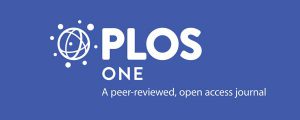
Occasionally, I look at scholarly, peer-reviewed journal articles, although they’re less helpful for beekeeping how-to’s and more useful for understanding issues in biology and toxicology, like the effects of certain pesticides or the genetic dimensions of health and immunity. To continue the example of the propolis envelope, I see in my search results a scientific article describing a study testing the efficacy of the propolis envelop against American foulbrood. Entomological or biological articles are as difficult for me to read, as they are for anyone without much training in the STEM fields (science, technology, engineering, and math). But I can tell from the article that there were measurable benefits from those traps, and I don’t really need to know much beyond that. In general, I look for scientific articles intended for a broader audience and therefore written more accessibly, such as those in Nature or PLOS One or other top-tier general scientific journals (even Scientific American). Literal access is important, too: because of my affiliation with Cornell, I can download articles from behind a paywall for free. But most people can’t. If you find the abstract of a paywalled article that you want to read, check with a reference librarian at your public library. Anyway, in this study, I can see from their methods that they stapled commercial traps to the inside of their hives, which should be easy enough for me to do (although I’m kind of a cheapskate, so the next search is on whether I can rig something up myself). Note that scientific studies are generally only able to make claims about one specific thing, in this case, AFB. Scientists can’t run a rigorous experiment unless they narrow the scope of their research to just one or two specific variables and control for everything else. It can feel limited, but that’s just how good science works.
In looking for answers to some of my questions, I might end up in a popular science article, such as something from National Geographic, but the tradeoff for readability is that these articles can be alarmist or misleading. I often find myself shaking my head in disagreement: some of the regular contributors to Mother Jones, for example, sensationalize the risks of pesticides, while on the other “side,” contributors to the Genetic Literacy Project and the American Council on Science and Health website tell only partial truths as well. There is a lot at stake around issues like these, which makes it even harder to know who to trust. But I don’t always like to talk about “sides”: honey bee health is subject to many factors and it makes sense to prioritize different factors in different conversations. Again, my rule is to skim a few articles about the same topic, to find commonalities. I also trace any news articles about recently published scientific studies back to their original source, where, even if I can’t figure out the particulars, I can tell whether the article has been described accurately or hyped up.
Finally, I mostly use a more passive approach to build my knowledge of beekeeping and keep up with news and research. That helps me know where to look later on, if I want to learn more about a particular topic. In my inbox, there’s Bee Culture’s “Catch the Buzz” updates, ABJ-Extra updates, messages on my club’s list-serv, and occasional emails from Randy Oliver’s Scientific Beekeeping list-serv. On Facebook, I’m in a few local/New York bee club groups, and I follow the Cornell Dyce Lab and the Bee Girl (Sarah Red-Laird). One of the most valuable tools in this regard has been the daily digest of BEE-L, a list-serv that connects hundreds of experienced and thoughtful beekeepers, mostly in the U.S. This is a prime example of the ACRL’s idea of “Scholarship as Conversation,” where “communities of scholars, researchers, or professionals engage in sustained discourse with new insights and discoveries occurring over time as a result of varied perspectives and interpretations.” Many contributors to BEE-L are unwilling to accept assumptions and conventional wisdom, instead delving into the nitty-gritties of how we know what we (think we) know about bees and beekeeping, all the hows and whys. There are rarely definitive answers, but instead a suite of well-reasoned queries, observations, conjectures, and more.
There are some things I still don’t understand well, because the available information is muddied by exaggerated claims or complicated science or conjectures that are difficult to prove. These include apitherapy (my current understanding: effective only for a very narrow range of ailments), honey as a inoculant against local allergies (my current understanding: unlikely), and the local adaptation of honey bee populations (my current understanding: possible over long time frames, but unlikely in most places in the U.S. today, given the movement of hives around the country). Notice I say “current” understanding: I expect my thinking to evolve over time as I learn more – since the truest thing ever said about beekeeping comes from the well-known authority on honey, Winnie-the-Pooh: “you never can tell with bees.” (I am grateful to Jim Fischer for pointing me to this nugget.) There will always be debates and gray areas; that’s what makes learning about bees a lifelong endeavor.
In the end, I almost always have more questions. But that’s okay: the ACRL describes “Research as Inquiry”: “research is iterative and depends upon asking increasingly complex or new questions whose answers in turn develop additional questions or lines of inquiry in any field.” In other words, it’s about the process: having conversations, being open to new information, examining our assumptions, finding a balance between respecting expertise but being skeptical, staying humble, and learning to ask more and better questions along the way.
Ellie Andrews is a doctoral student in Development Sociology at Cornell University, studying the sociology of honey bee health. To get in touch: eleanor.snow@gmail.com.




